Native Americans had horses since the early 17th century and used them in many areas of daily life. They originally obtained them from Spanish settlers or captured them from the wild. The Comanche people were amongst the first tribes to acquire horses and manage them successfully.
The most common Native American horse breeds are the Appaloosa, Quarter Horse, Paint Horse, and Spanish Mustang. Directly or indirectly, Native Americans influenced most modern American horse breeds.
Soon after native tribes first acquired horses, they became an integral part of Native American culture. The tribes relied on horses for warfare, travel, and hunting and developed a close relationship.
Native Americans had a strong preference for spotted horses and created many variations of the color pattern. Their extraordinary breeding knowledge is why Native American horse breeds are so intelligent, athletic, and resistant.
Here are the 9 most common Native American horse breeds!
Appaloosa
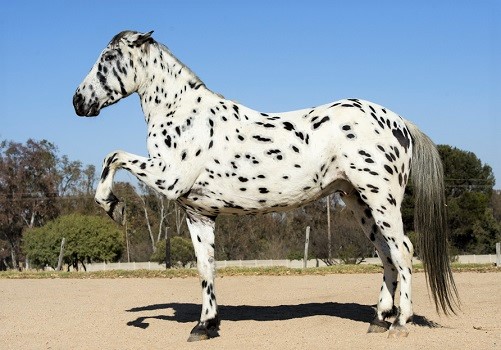
jacotakepics / Shutterstock.com
The Appaloosa is a Native American horse breed developed by the Nez Perce people in Idaho. They are most famous for their spotted coats and are popular Western riding horses.
The Nez Perce tribe obtained their first horses from the Shoshone in the first half of the 18th century. By 1750, they already had herds of horses and were actively doing selective breeding. However, the spotted color pattern only came into focus during the 19th century.
At the time, Nez Perce’s breeding horses were highly regarded by white settlers and sold for large sums of money. The modern Appaloosa is slightly stockier with a variable body type due to mixing with other breeds.
Today, Appaloosas are spread around the world and compete in almost every discipline there is. They have influenced many other spotted horse breeds, such as the Nez Perce Horse, Walkaloosa, and Pony of the Americas.
Also read our list of the 10 most common spotted horse breeds.
Choctaw Horse

As the name suggests, this Native American horse breed was produced by the Choctaw tribe over hundreds of years. The Choctaw’s home was the southern land of today’s Mississippi, where they purposely bred their horses for long hunting trips.
To the Choctaws, these horses symbolized honor, glory, wealth, and prestige. They are small in size, ranging from 13.2 to 14.2 hands, have strong hooves, and good endurance. They also resemble Spanish Mustangs and can be of any color, of which pinto is the most common.
Unfortunately, after the Choctaw Nation’s relocation in 1831, most of their valuable herd was lost. Today, the breed survives in sanctuaries and private farms, with conservationists working relentlessly to preserve the Choctaw Horse for the future.
Nez Perce Horse
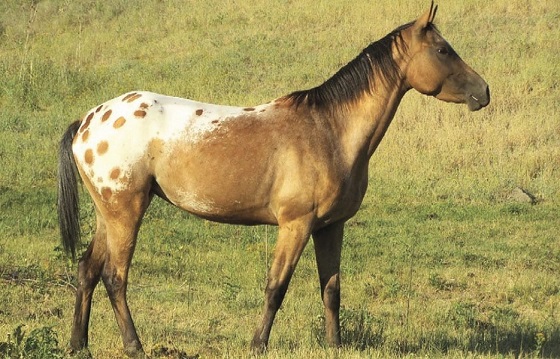
The Nez Perce Horse is a Native American horse breed that takes its name from Idaho’s Nez Perce tribe. They are essentially a cross between the Appaloosa and Akhal-Teke, creating a sporty horse with a spotted coat.
The purpose of the Nez Perce Horse is to recreate the Nez Perce people’s original high-quality horses. The breed’s foundation stock was a herd of Appaloosa horses that belonged to an ancient and pure bloodline.
The ancient Akhal-Teke breed’s introduction gave the Nez Perce Horse back its original elegance, athleticism, and outstanding endurance. Therefore, the breed is especially good at long-distance riding and also jumping.
Many Nez Perce Horses are gaited and able to perform the running walk, a trait found in some Appaloosa bloodlines. They commonly have palomino or buckskin coats with Appaloosa spotting and mottled skin.
American Quarter Horse
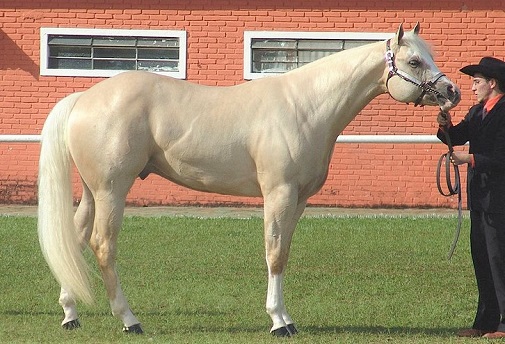
Photo by José Reynaldo da Fonseca
The American Quarter Horse is a partly Native American horse breed developed from the crosses of local Chickasaw ponies and English Thoroughbreds. Its name comes from its ability to outrun any other breed on a quarter-mile distance.
The Chickasaw tribe’s territory spread across the Southeastern United States. They first obtained horses from the Spanish in the 16th century, from which they developed a fast stocky-type pony of 13 hands. This early breed contributed to the foundation of the colonial Quarter Horse.
The modern Quarter Horse retains many features from its native ancestors and is the most popular horse breed in the United States today. It has three variations: the stock type, the halter type, and the racing/hunter type.
Quarter Horses are famous for their “cow-sense” and talent in Western disciplines. However, they’re also great all-rounders and will do well in just about any discipline.
Nokota Horse

The Nokota Horse is another partially Native American horse breed that has ancestors bred by the Sioux tribe in southwestern North Dakota. They often have blue roan coats and many exhibit the Indian shuffle gait.
The foundation stock for the Nokota breed included ranch horses of Sioux breeding and Thoroughbred, Spanish, and harness horses. They nearly disappeared during the 20th century, but a few herds found shelter in the new Theodore Roosevelt National Park.
When the park sold most of its horses in 1986, two brothers Leo and Frank Kuntz bought some and started the Nokota Horse Conservancy. Today, two types of Nokota Horses exist, namely the traditional and ranch types.
Nokota Horses can stand anywhere between 14 and 17 hands and occur in a variety of colors. They are excellent endurance horses but also compete on Western and English shows.
Spanish Mustang
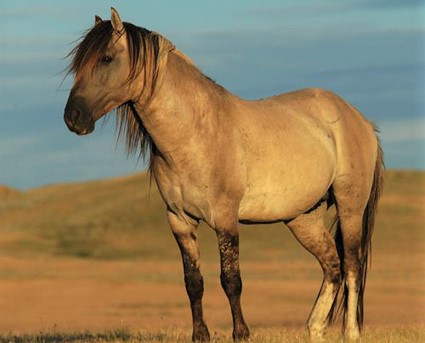
The Spanish Mustang is a Native American Horse breed re-established using feral horses, herds of the Plains tribes, and ranch stock. Their origins trace back to the first horses that arrived in the New World, whom they resemble in conformation.
Out of concern for the survival of colonial Spanish bloodlines, a group of horsemen began efforts to preserve them by creating a new breed. The Spanish Mustang registry began in 1957 and registered horses that indicate Spanish ancestry. In 2006, a genetic study confirmed that Spanish Mustangs are descended from Iberian horses.
Height in the breed ranges from 13.2 to 15 hands, with the latter being the maximum acceptable height. Common colors include gray, chestnut, bay, and black, but spotted and dilution colors also occur. Spanish Mustangs excel in the endurance discipline and also make great all-rounders.
Also read our guide to the 6 different types of mustang horses.
American Paint Horse
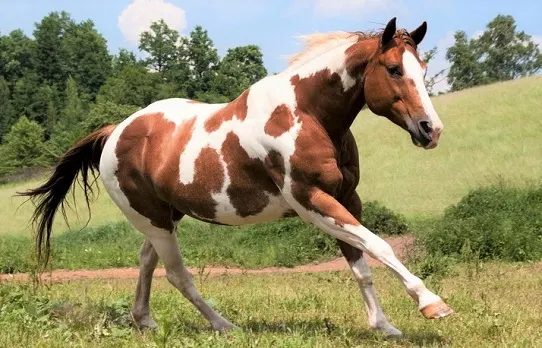
Vera Zinkova / Shutterstock.com
Native Americans have always had a strong preference for colorful horses and selectively bred them for many centuries. Although the American Paint Horse officially derives from Quarter Horses and Thoroughbreds, Native Americans have undoubtedly had a hand in their creation.
According to written records, the first horses with pinto coloring traveled to the Americas with Hernando Cortes in 1519. The Plains tribes have soon captured some of these colorful horses and began to breed more of them.
Contrary to popular belief, the American Paint Horse is not only a color breed but has distinct physical characteristics. Their stocky conformation and low center of gravity make Paint Horses extremely skilled ranch workers.
The three main color patterns in the breed are tobiano, over, and tovero. Other than Western disciplines, some Paint Horses excel in hunter and show jumping competitions.
Florida Cracker Horse

The Florida Cracker Horse is a Native American horse breed that emerged from the ponies of the Chickasaw tribe. Florida Cracker Horses were the Florida cattle herders’ mounts and exhibit two special gaits, the running walk, and the amble.
The origins of the Florida Cracker date all the way back to the Colonial Spanish Horses that accompanied explorers to Florida in the 16th century. When both horses and cattle were left to roam freely, many Native American tribes in the area captured and started breeding them. These small and agile horses gave the foundation stock to the Florida Cracker breed and contributed to the Quarter Horse.
The breed’s name derives from the cowboys’ whip’s cracking sound, which they used for herding cattle. In 1930, they were replaced by Quarter Horses, and numbers started to decline.
Florida Cracker Horses stand between 13.2 and 15 hands tall and are mostly of solid colors. Nowadays, they compete in Western and endurance riding events and also make great stock horses.
American Indian Horse
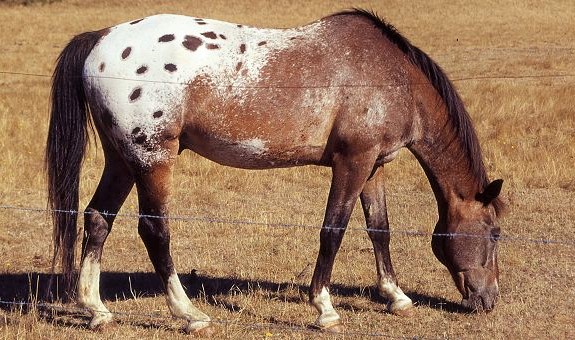
The American Indian Horse is a collective name for all horses descended from the herds of the Plains tribes. The breed requirements are either Colonial Spanish Horse ancestry or conformation that resembles the original “Indian horse.”
The Plains tribes’ home was the lands of the Great Plains that stretch across the central United States. Members of these tribes were excellent horse people and included the Sioux, Shoshone, Cheyenne, Comanche, and Blackfoot tribes.
The American Indian Horse registry opened in 1961 to preserve the colonial bloodlines. These horses are hardy and surefooted, range from 13 to 16 hands in height, and are often pinto or spotted.
American Indian Horses are ideal for Western riding and Gymkhanas, as well as pleasure and trail riding. The breed also played a role in the foundation of various American horse breeds.
Source: horseyhooves.com








